This guest post authored by Andrey Ulanov.
In the minds of Western people, the inhabitants of the USSR may sometime look like ants; a large mass working towards one great goal without personal ambition. This, of course, could not be further from the truth. Soviet people were not much different from any other nation and as it often happens more talented individuals tended to have particularly complex personalities. In particular, no weapon designer believed that his tank, aircraft, or machine gun was less deserving than the rest. Pride, ambition, envy, and adamant confidence that their work is the best guided them even to the point of protesting state trials results.
During the WWII, supervising Soviet arms production was anything but an easy job. Balancing the urgent demands of various Army branches with ever changing capacity and capability of Soviet industry demanded unprecedented ruthlessness. It should not come as surprise that Stalin chose Lavrenty Beria, his closest comrade and the infamous chief of NKVD, Soviet secret police, to do it. As part of this job, Beria spent a lot of time and effort trying to navigate the tensions and ambitions of weapon designers. One of the strange things that happened at that time related to the name of the new heavy machine gun in 1943. Here is what Vasily Degtyarev writes about it in his memoirs (ca. 1950):
“An extremely valuable contribution to the armament of the Soviet troops was made by the untimely deceased highly talented designer Goryunov. He had been worked with us for fifteen years. Known as an amazingly skilled craftsman, he had never shown himself as an inventor or designer.
And suddenly, first light on a summer day of 1942, Goryunov came to me with a large package.
– Vasily Alekseevich, could you take look at the model of my machine gun? I was going to see you many times but I was somehow shy.
I examined Goryunov’s model and, I confess, could not believe my eyes. The model encompassed all the latest advances in weapon automation.
– When did you do it, Maksimych? – I asked.
– I’ve been thinking about it for quite some time but only assembled the model recently as I’d heard that we were tasked with creating a new heavy machine gun.
The wood, tin and cardboard model was executed in a truly bold and original way. I invited Goryunov to join the design bureau, asking him to pick out a couple of reliable assistants. On the same day, he brought in his nephew Mikhail Goryunov and the master locksmith Voronkov. “
However, I highly doubt that this conversation went as described or even took place at all. I discovered the “Minutes of the meeting of the technical commission for the consideration of projects of a 7.62 mm caliber heavy machine gun developed by the designers of plant No. 2 on May 15, 1942“. Here’s what it says:
“The project of the designer Goryunov is a more complicated version of a light machine gun design by the same author, with an ammo feed design similar to the Yurchenko machine gun. The project does not deserve attention.”
The protocol was signed by Bugrov, the chief engineer of the Design Bureau No. 2 (KB-2), but it also carried a special note that “All projects have been reviewed and conclusions have been made jointly with the Hero of Socialist Labor V. A. Degtyarev.” Thus, in striking contrast to what the post-war memoir states, the first reaction of the KB-2 leadership to Goryunov’s project was negative. Also, the KB-2 management appear to have been well aware of the project prior to its demonstration and the fact that it had been based on the GVG, an earlier LMG design by the three designers – Goryunov, Voronkov, Goryunov.
Before continuing, it is necessary to draw the attention of the reader to one important administrative-bureaucratic point. Vasily Degtyarev was the head of KB-2. However, the machine gun factory No. 2 also had its own design department. This in-house design bureau, where machine guns were both designed and built, was essentially competing with KB-2. When Gorynov et al moved to Plant No. 2, it was this in-house design bureau that they joined. Chief Engineer of the plant G.I. Markelov and the Chief Designer of the plant A.F. Popov followed the work of the GVG machine gun designers.
Petr Goryunov, together with his nephew Mikhail Goryunov and master-locksmith Vasily Voronkov, managed to design a test-ready GVG prototype already in 1941. In early 1942, a revised version was ready. In May 1942, an inquiry regarding the progress of the highly anticipated GVG was sent to the People’s Commissar of Armament Ustinov and the head of the Main Artillery Directorate Yakovlev by Beria himself. The Soviet leadership was very interested in the new light machine gun. At the same time, judging by vast amount of various correspondence, Dyagterev was working on a competing 7.62mm LMG, which was approved only in April 1942 subject to a long list of comments and suggestions.
In September 1942, the Red Army held a multi-stage competition for a new machine gun. The GVG LMG (under the name of SP-GVG) was recognized as the best, surpassing, among other, Degtyarev’s newest model, the DS-42. As you would expect in the time of war, SP-GVG want into production asap. In February 1943, the plant reported that the first batch of 50 guns was factory-tested. On March 3, 1943, the People’s Commissar of Defense (that’s Minister of Defense in Soviet-speak) awarded the three designers with a cash prize of 5,000 rubles each. To put this in context, destroying a tank at the frontline would net a soldier 500 roubles.
Then the first serial SP-GVG was sent for military trials. There is a legend that they again competed with the DS-42, but this was not the case. The new machine gun was compared with the old “Maxim”. The tests took place in April-June 1943, both at the front line and in the rear of 1160th platoon 352nd division. At this stage, in all documents, the new machine gun was still referred to as SP-GVG or simply “mounted GVG”.
However, the SP-GVG went into full-scale production as SG-43. Why and at what point the SP-GVG lost the initials of two of its designers and became SG-43 (Goryunov’s mounted) remains a mystery. Some say that the renaming was due to standardization and for the sake of brevity. I highly doubt that as abbreviating three designers into an official name was not uncommon in the USSR, e.g. LaGG-3 fighter by Lavochkin, Gudkov and Gorbunov. Others believe that this was to honor Petr Goryunov, who passed away in December 1943. This seems even more unlikely as the renaming took place no later than May 15, 1943 (the official date of signing SG-43 into production) and 41 year old Goryunov was apparently feeling well enough to personally fly to Moscow to take part in the process.
My inquiry to the historians of Kovrov remains unanswered.

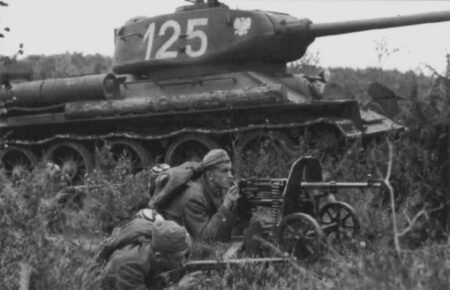
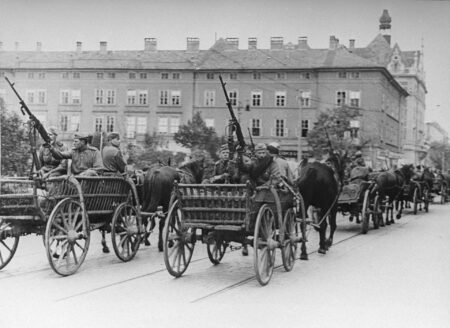
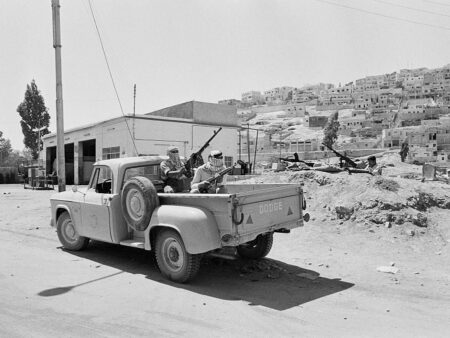

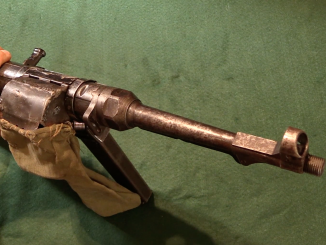
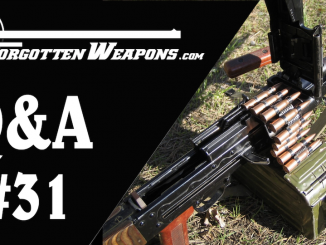
The insights here are educational; it seems that no matter what system is in place, whatever you term it, there’s still politicking and hierarchy-games happening. I begin to believe it’s inherent to the human condition, and there’s really not a bit of difference between Stalinist Soviet Russia and “capitalist” United States of America–There’s always the entrenched interests and backroom machinations behind everything, and the poor bastard stuck using the tools in combat is always at the tail-end of everyone’s concerns.
I think that study of all this is more a study of the human mind, the personalities involved, and all that “cultural crap” than it is truly a question of technology and machinery. Here in the US, we got the many and varied failures of machinegun design in the post-WWII era mostly because of the inherently flawed culture and organization involved in doing the development and testing–And, that’s all a “people” problem, not necessarily a technological one. They could have made an outstanding weapon from the basic principles involved in the design of the M60, for example, but they did not. The reasons why aren’t there in the basic technology, of either the weapon or the production machinery involved, but in the people running the show.
In a fight, they tell you to “watch the hands”; don’t listen to what your opponent is saying as he talks trash to you, but watch his hands for signs of what he is actually preparing to do. I think that when contemplating any weapons program, it may be more important to “watch the people”, and the egos involved. A case in point would be the French adoption of the Lebel: Absent the presence and activity of Georges Ernest Boulanger as the Minister of Defense, would the French have gotten themselves stuck with the Lebel and its horrible cartridge??
The weapons are an expression of the culture, as is the manner that culture goes about fighting its wars.
“(…)culture(…)”
That would explain why Japanese machine guns used during WW2 were somewhat old-fashioned. Japanese society at that time was generally against criticizing your bosses which means feed-back regarding weapons was hampered.
You can say they “suffered” with utter loyalty and it turned against them. But we also know that lots of Japanese armaments, specifically those destined to air-forces, were foreign based and started up with licenses. Those also performed rather well.
Practically all IJA machine guns from 6.5mm on up to 13mm, were based on the Hotchkiss system which had been licensed form the French firm in 1921. Even the supposed ZB26 clone, the Type 99 LMG, was more Hotchkiss than ZB.
The Japanese Army stuck with Hotchkiss-type MGs because they worked. It’s really no stranger than U.S. forces using Browning-type guns for the same reason.
It’s interesting to note that when the IJN wanted an improved 20mm wing-mounted cannon for their fighters, they made a slightly-scaled-up copy of the Browning M3 .50BMG aircraft gun. It worked perfectly well, at a time when U.S. Navy BuOrd was telling U.S. Navy BuAer that such an enlarged 20mm Browning “could not possibly work”.
cheers
eon
Thank you for filling in Eon.
I am not sure if this recollection of mine is correct, but I recall a IJN pilot in an interview saying the cannon mounted on his plane was of poor ballistic performance. He said they commonly preferred large caliber MGs instead of cannons. Maybe it was a different type/ model? I do not know how to get back to the interview.
Can you clarify which gun are you talking about? The main Japanese aircraft gun of the Second World “Type 99” was made on the basis of Oerlikon.
“(…)improved 20mm wing-mounted cannon for their fighters, they made a slightly-scaled-up copy of the Browning M3 .50BMG aircraft gun.”
M3? Are you sure? There existed Japanese 20mm Ho-5 Cannon
http://pwencycl.kgbudge.com/J/a/Japanese_20mm_Type_1_gun.htm
but it is said to be developed from Japanese 12.7mm Type 1 Machine Gun which in turn was developed from Model 1921 Browning.
@Daweo
Eon is confusing the M3 with earlier versions of the .50 caliber machine gun. The increased rate-of-fire M3 was adopted post-war by the USAAF/USAF and was the armament of such aircraft as the F-86. I don’t remember off-hand which fighter was the first to receive the M3 instead of the M2.
Also, as Andrey already pointed out, the Japanese Navy 20mm cannons were based of the Oerlikon FF (API principle). The later Type 99-2 had an improved rate of fire, but it remained fairly pedestrian. The Ho-5 cannon developed from a .50 cal Browning was an Imperial Japanese Army Air Force weapon. As typical to the Japanese military at the time, there was virtually no co-operation between the Army and the Navy on aircraft armament…
Correcting myself:
The IJN Type 99-1 was based on the Oerlikon FF F (20×72mmRB) and the Type 99-2 on the FF L. The latter was actually a licensed copy and fired a more powerful 20×101mmRB ammunition with a much higher muzzle velocity (750 m/s vs. 525 m/s), but it had practically the same rate of fire as the Type 99-1 (about 500 rpm). There was also a late development called Type 99-2 model 5, which increased the rate of fire to 620 rpm, but it saw no actual service aboard aircraft.
This data comes from Emmanuel Gustin’s early web article (as opposed to his later books), but it should be still correct as far as the numbers go: http://users.telenet.be/Emmanuel.Gustin/fgun/fgun-pe.html
Where were Dodge pickups used as a weapons platform?
Commons wikimedia https://commons.wikimedia.org/wiki/File:PFLP_patrol_in_Amman,_Jordan,_12_June_1970.png
that image is titled PFLP patrol in Amman, Jordan, 12 June 1970
“(…)People’s Commissar of Armament Ustinov(…)”
His memoirs (in Russian) titled Во имя Победы are available here http://militera.lib.ru/memo/russian/ustinov/index.html
It should be interesting read to anyone understanding Russian language and interested in overview of actions of said Commissariat during and around Great Patriotic War.
For example you might become aware that:
Развертывание Вооруженных Сил – к июню 1941 года их численность была увеличена по сравнению с 1939 годом почти в три раза и превысила 5 миллионов человек – требовало много людей. А война, которая приближалась, потребует, все мы это хорошо понимали, еще больше.
which means
Enlargement of Armed Forces – to June 1941 personnel count when compared to 1939 year was almost tripled and become over 5000000 people – many people were needed. War which was closer and closer would need even more, which we did understand
“(…)Main Artillery Directorate Yakovlev(…)”
To prevent possible confusion this is different entity from Yakovlev (aircraft designer) which also hold position in НКАП (People’s Commissariat Aviation Production) during Great Patriotic War.
“(…)People’s Commissar of Defense (that’s Minister of Defense in Soviet-speak)(…)”
As historical tidbit People’s Commissariats were rebranded into Ministries shortly after end of war, in 1946.
The LaGG-3 was known to the Red Air Force as lakirovanny garantirovanny grob (“(the) varnished guaranteed coffin” – лакированный гарантированный гроб)
Advanced versions were credited to Lavochkin alone, with the La-7 being one of the best fighters of the war and flown by the leading Allied ace Ivan Koszhedub – who flew MiG-15’s against the USAF in Korea
https://en.wikipedia.org/wiki/Lavochkin_La-7
https://massimotessitori.altervista.org/sovietwarplanes/pages/la-7/la-7colors/27kozhedub/27kozhedub.htm
The culmination of the line was the La-11
https://en.wikipedia.org/wiki/Lavochkin_La-11
This is badly off-topic, but I have to point out that the LaGG-3 received marked improvements during its manufacturing, which continued surprisingly long, well into 1943. Especially the automatic leading edge slats introduced in series 35 improved handling considerably, making the aircraft a lot more novice friendly (and the VVS did have a LOT of novice pilots at that point…).
Furthermore, the lightening measures introduced in series 66 improved climb rate and maximum speed close to the original prototype. Manufacturing quality of the wooden wings was also improving. Although still considered inferior to German fighters, a competent pilot in a LaGG-3 series 66 could “hold his own” against the Germans. Unfortunately for the Soviets their pilot quality, while slowly improving, was still much inferior to the Germans in 1943.
The La-11 is another interesting story. The only true escort fighter ever put to serial production by the Soviets, it suffered from the same disease as the LaGG-3, in other words it was underpowered. It was a fighter introduced in 1947 with an engine from 1943 (Shvetsov ASh-82FN). Exactly the same engine powered the La-5FN of 1943! The refined airframe of the La-11 would have been capable of a much better performance, but the Soviets simply did not have a suitable engine available. For a last generation piston engined fighter the La-11 must therefore be considered outdated from the beginning, especially when compared to its Western counterparts or even some of the advanced types the Germans introduced already in late 1944 and early 1945, such as the Fw 190D and Ta 152H.
“with the La-7 being one of the best fighters of the war and flown by the leading Allied ace Ivan Koszhedub”
That being said, another Soviet flying ace Alexander I. Pokryshkin
https://en.wikipedia.org/wiki/Alexander_Pokryshkin#Aircraft_flown_by_Pokryshkin
abandoned upgrading his regiment to La-7 after deadly malfunction, they de facto switched to P-63, even though this was not allowed under Lend Lease agreement.
Forgot to mention that the horse drawn machine gun carriage was known as a Tachanka and was used to great effect by Budenny’s 1st Cavalry Army in the Russian Civil War
https://en.wikipedia.org/wiki/Tachanka
http://2.bp.blogspot.com/-omvDSGn2pyY/VkIkX9TT5GI/AAAAAAAAN1I/AhKz7w-6cIs/s1600/maxim2.jpg
The Technical can be thought of as a modern day Tachanka
You got it – “tachanka”, key Soviet military mobility link. Thanks for bringing it in. Not to be confused with “tatanka” native Americans name for buffalo 🙂
Horse carts for machine guns were actively used during the civil war. Since 1942, the Red Army actively used reconnaissance units on off-road vehicles. First “Batnam”, then ” Willys MB”, later they began to be supplemented with Dodge WC and armored personnel carriers, American and captured German.
This was the Soviet counterpart to the British Long Range Desert Group. These units in the offensive went far ahead and attacked at the expense of superiority in firepower.
https://waralbum.ru/2341/
This is the first time I see such combination; and I have seen a lot of war pictures. Thanks!
Well, some kind of weapons are less… photogenic than others.
Also many kind of weapons used during Russian Civil War have evolved and were used during Great Patriotic War for example armoured trains like Бронепоезд «Московский Метрополитен» https://urban3p.ru/blogs/20980
which in duration of 3 days managed to destroy 4 aeroplanes, 6 heavy tanks and self-propelled guns.
“(…)combination(…)”
Willis was also used in Soviet Union as mount for multiple rocket launcher, see 6th or 7th image from top: https://topwar.ru/37062-gornye-katyushi.html
>>was used to great effect by Budenny’s 1st Cavalry Army in the Russian Civil War<<
…and to a much less glorious effect by Polish cavalry in 1939.
By the way, it's nice to see the Polish White Eagle (minus a crown) at this tank!
🙂
That is the Polish army “in the East.” The guys not executed at Katyn or handed over to the Free Polish Army in the Mideast formed a Polish army under Soviet tutelage. The uniforms are very distinctive, being made generally from Soviet-type materials but of a completely different cut and pattern, and also with uniquely Polish service caps and insignia. The Polish eagle sans crown was impressed on the buttons and often painted on helmets and as national markings.
…even more strangely, this Orzeł Bez Korony (eagle without a crown) on caps of Poles who did not manage to get to the General Anders troops, was based on the 1914/15 pattern of the Polish Legion bird. Led by one Piłsudski; once a socialist, later Bolshevik’s arch enemy.
https://pl.wikipedia.org/wiki/Orze%C5%82ek_legionowy
When reading about Russian armaments developments a couple things strikes me.
First is that the final outcome (model name) is named often after men who were not necessarily the most intellectually proficient but rather practical “handymen” kind of people. I believe M. Kalashnikov was this kind. At the end this direction produced the best results.
The second is the structure/ complexity of research bureaus with names of people who were never publicly mentioned, yet they were apparently key people with lots of background knowledge.
To read a material like this directly out of Russian source puts of light on true history of such developments. It is of immense value to have a Russian researcher such as Mr. Ulanov with us.
“(…)bureaus(…)”
Now I am extremely confused as I always though that plural form is bureaux.
“(…)never publicly mentioned(…)”
Do not overlook that USSR during Stalin reign pushed what is called Culture of Secrecy https://www.cia.gov/static/b8834854dbda7fb29d04ee27e368b3e7/Eroding-the-Soviet-Culture.pdf
When English adopts words from other languages, those words will mutate strangely, especially in America. Thus the French plural “x” becomes the English plural “s.” The Germans re-spelled “bureau” as “Buero” (u with an umlaut, which I cannot type here). In British English, “connection” was spelled “connexion” until quite recently.
Spoken English has even more traps: In the UK “lieutenant” is still pronounced “leftenant” though even the Canadians now say “lootenant.” The different pronunciations for e.g. “lead” (“leed” for “I am in front” and “led” for both the past-tense verb and for the noun, lead the metal) and “read” (“reed” for present tense and “red” for past tense) can be maddening. British county names are particularly difficult for US English-speakers not originating in Boston. Here’s to international understanding, somehow.
I have it that the Ukrainian Insurgent Army led by Nestor Makhno and Fëdor Shchus developed the horse-drawn water-cooled Maxim gun, aka. the “tatchanka.” At least there is one in his home town’s museum Huliaipole, as shown in the link. But like any good idea, it takes on a life of its own, no?
“(…)developed the horse-drawn water-cooled Maxim gun(…)”
No, machine-gun 2-wheel cart is mentioned as ready to mass production in Russian document from 1909 year. Was Makhno forces did was wide usage to gain movement advantage, for example it allowed them to travel above 600 km in 11 days.
https://ru.wikipedia.org/wiki/%D0%A2%D0%B0%D1%87%D0%B0%D0%BD%D0%BA%D0%B0
…Ukrainian Insurgent “Army led by Nestor Makhno and Fëdor Shchus developed the horse-drawn water-cooled Maxim gun, aka. the “tatchanka.””(C)
Many people from the Makhno formation were veterans of the Great War.
A variety of horse-drawn carts with machine guns were widely used by most of the parties involved.
If I am not mistaken, the primacy in application was shared by England in Sudan (?) And the USA in Mexico (?).
https://media.gettyimages.com/photos/the-gatling-gun-for-police-patrol-service-shown-mounted-on-a-police-picture-id515958100?s=612×612
In the Russo-Japanese War, such tricks were also used by both sides.
https://www.lookandlearn.com/history-images/preview/U/U225/U225498_The-Nordenfelt-Cavalry-Machine-Gun-with-New-Galloping-Carriage.jpg
http://silverhawkauthor.com/images/site_graphics/Artillery/Artillery—Nova-Scotia/c000648.jpg
Nobody posts the tchanka song?
https://www.youtube.com/watch?v=jGofoatz-20